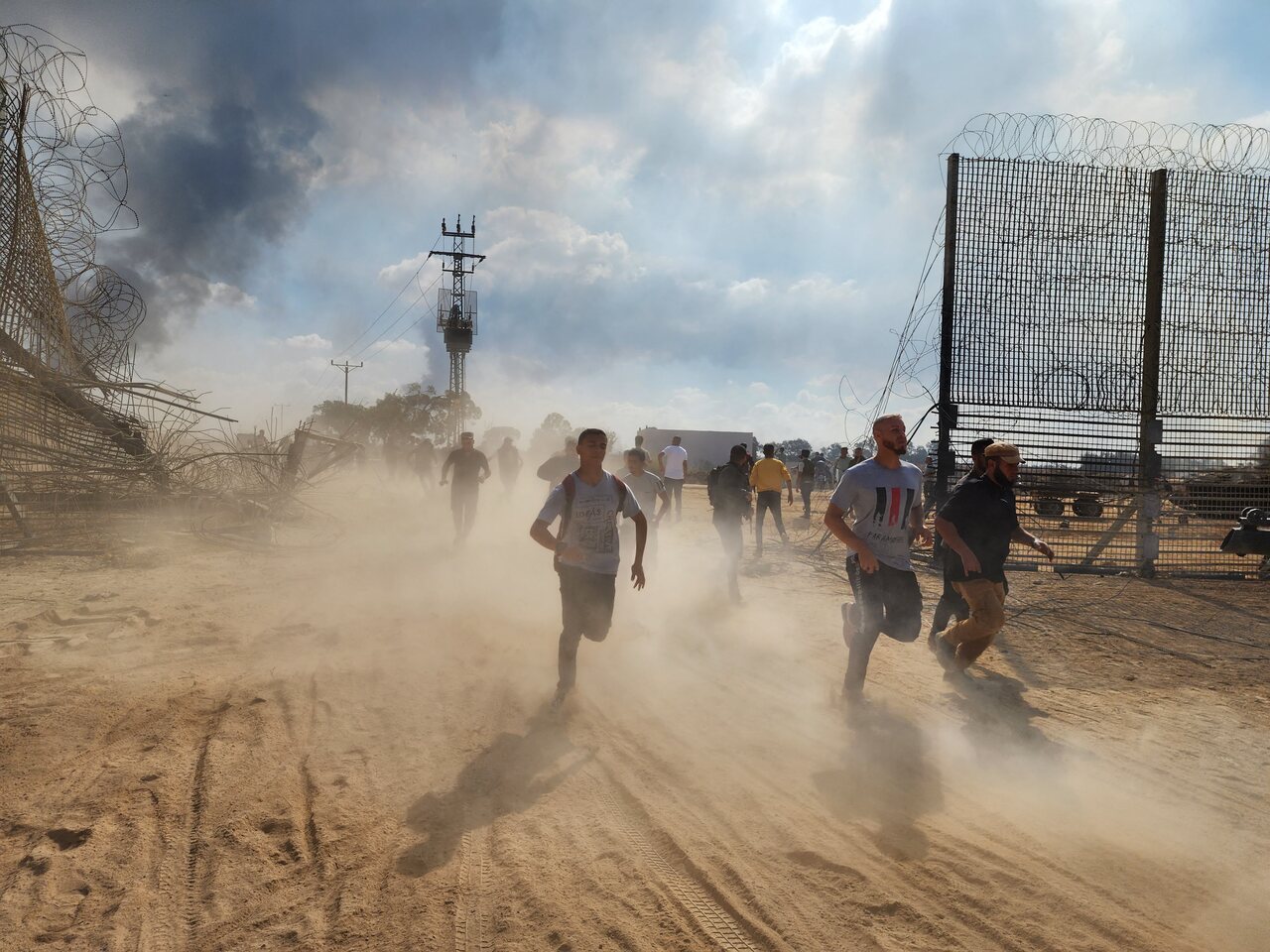Israel Launches Ground Operation in the Gaza Strip
Israel has expanded its military operations against Hamas to include the use of ground forces in the Gaza Strip since 27 October. However, the stated goals of the operation—the dismantling of Hamas structures and the release of hostages—remain far from being realised, and international pressure is mounting on the Israeli authorities because of the growing number of Palestinian civilian casualties.
 MOHAMMED SALEM / Reuters / Forum
MOHAMMED SALEM / Reuters / Forum
How is the Israeli operation proceeding?
The Israeli Defence Forces, having entered the Gaza Strip on an east-west axis, cutting it in half, is concentrating its offensive on the main centre of the northern part, Gaza City. Targeted air strikes accompany ground operations. There have been about 13,000 strikes across the Gaza Strip since 7 October. They are intended, in line with previous actions, to minimise the risk of casualties. The Israeli forces are concentrating on the elimination of points of resistance, with less focus on permanently capturing a given area. Losses by Hamas and other militant groups remain difficult to verify but most likely amount to several thousand dead. However, the organisation still retains the ability to conduct rocket fire into Israeli territory by securing some of its arsenal in a network of tunnels. There is a strong possibility Israel will pursue a similar course of action in the southern side of the Strip.
What is the situation of civilians and hostages?
Israel is using humanitarian corridors to control the flow of people from the northern part to the southern. According to UN data, about two-thirds of all residents in the Gaza Strip are internally displaced. The official tally of human losses reported by Hamas-controlled services is 10,000 dead and 30,000 wounded (without distinguishing between civilian and military casualties). With scarce resources, minimal humanitarian aid and no evacuation options (currently limited only to foreign citizens), the number of Palestinian civilian casualties is set to rise, especially with Israel’s acceptance of these losses during its attacks on Hamas targets. Israel is also hoping that a combination of external and internal pressure will force Hamas to make concessions on the 245 hostages (so far, Hamas has released four people, and Israeli forces have freed one prisoner). A short tactical pause in exchange for releasing more hostages is plausible.
What are the prospects for action and the Israeli political context?
The Israeli authorities firmly reject the possibility of a ceasefire without Hamas releasing the hostages. This is because of the dual socio-political pressure on Benjamin Netanyahu’s government. On the one hand, there is great demand that the hostages be prioritised (even at the cost of a full prisoner exchange). On the other hand is the lack of concessions—among a significant part of citizens and fellow radical right-wing coalition members—to any steps interpreted as concessions to Hamas. Adding to the burden is the deepening criticism of the prime minister over the scale of the 7 October failure of the security services and subsequent actions. Despite outside pressure, the current course of the Gaza operation remains acceptable internally to the Israeli public and most political forces. The situation may change as the war drags on, primarily because of the practical impossibility of entirely eradicating the Hamas presence in Gaza.
What is the role of international pressure?
The international community, primarily the U.S. and Israel’s closest allies from Europe and the region, is the main force of pressure limiting the scale of the Israeli operation in Gaza and increasing the dimension of support, such as humanitarian aid. The primary concern is an uncontrolled increase in civilian casualties, hence the announcements of more active participation by external partners, including proposals for the establishment of a field hospital by the UAE in Gaza or the use of a French hospital ship for wounded Palestinians. At the same time, states remain vitally interested in the hostage issue and the evacuation of their citizens, which increases the role played by intermediaries Egypt and Qatar. In addition, foreign partners are most attentive to the need to work out a new formula for governance of the Gaza Strip after the end of the current conflict.
What is the situation in the West Bank and on the border with Lebanon?
The West Bank remains a volatile area due to the increasing number of Israeli-Palestinian clashes, as well as Israeli military operations, terrorist incidents, and numerous attacks by Jewish settlers against Palestinians with little deterrence from Israeli services. At the same time, there are no indications of risks to Palestinian Authority institutions, although the economic situation is becoming increasingly difficult due to Israeli restrictions. Despite Hezbollah’s activities on the Israel-Lebanon border, the organisation still has not decided to escalate further. Its cautious stance was reflected in a 3 November speech by the group’s leader, Hassan Nasrallah. A change in position remains a possibility as the situation in Gaza develops.





